The US Federal Budget for 2010 was released today, February 26,2009. Overall, roughly half of spending goes to the US Department of Defense with the remaining money divided among 22 other  departments. As one of a very small number of Americans who have read through the 140 page docket outlining the plan, I have analyzed and detailed it below. Overall, Departments like Agriculture show great detail while other departments like that of State use broad language and provide few clues into what programs will actually receive the billions. Unsurprisingly the National Intelligence Agency has no details about either total budget nor allocation.
departments. As one of a very small number of Americans who have read through the 140 page docket outlining the plan, I have analyzed and detailed it below. Overall, Departments like Agriculture show great detail while other departments like that of State use broad language and provide few clues into what programs will actually receive the billions. Unsurprisingly the National Intelligence Agency has no details about either total budget nor allocation.
2009 Federal Budget Breakdown
Overall, close to half of the federal budget goes to the Department of Defense. When the funds from the Recovery Act are added in, The Department of Education is allocated a vast amount of money to help improve public school and increase access to higher education. The Department of Transportation also see a great deal of money for programs that will improve air traffic control and create an efficient and green fast interstate rail system.

To better understand the allotment of funds, the following chart shows the distribution of capital in the 2010 Federal budget.

Department of Education - $46.7billion+$81.1billion from Recovery Act
Obama’s commitment to bettering the US educational system can be seen through the $81.1 billion he dedicates to education in the Recovery Act as well as the $46.7 billion in the 2010 federal budget. He wants to strengthen public schools, reward effective teaching and expand opportunities for higher education.

Department of Education Budget Highlights
Innovative Solutions
- Expand access to high quality early childhood education – no monetary value given
- Funds education research – no monetary value given
- Increase funding for charter schools – no monetary value given
College Access and Completion
Department of Defense - $663.7 billion+$7.4 billion from the Recovery Act
The Department of Defense receives the lion’s share of the Federal Budget to be used both internally and externally. $533.7 billion is requested for specific programs with another $50-100 billion earmarked should the Department of Defense need it. The budget will cover the draw down of US troops from Iraq, the aid of struggling states like Pakistan and the funding of programs that help to monitor cyber, biological and nuclear threats. Overall, a large amount of funds are not detailed

Major Budget Allocations for the Department of Defense
Military Operations
- Military Operations in Iraq and Afghanistan - $130 billion
- Money that currently has no allocation but is budgeted should the Department of Defense need it - $50 billion
Soldiers
- Pay for service members that will keep pace with or exceed private sector jobs – exact amount not provided
- Expansion of military retired pay and Veterans Disability Compensation to all retirees receiving disability retired pay – exact amount not provided
- Expansion on integrated mental health professionals with deployed unites – amount not provided
- Improved medical care and housing for Wounded, Ill and Injured Servicemembers – amount not provided
- Quality of life improvements for American Soldiers, Sailors, Airmen and Marines include modernization of barracks – amount not provided
Department of Transportation - $72.5billion + $48.1billion from the Recovery Act
The Department of Transportation is to use their budget to improve safety and reduce congestion as well as provide a financially viable system for the government. These improvements should also lead to new jobs for Americans. The money under the authority of the DOT increases from $17 billion to $70 billion. Overall, very few details are given as to why and exactly where the money is going

Major Expenditures
Modernize Traffic Control
- Improve rural access to the aviation system as demand for subsidized commercial airspace increases - $55million
- Improve the efficiency, safety and capacity of air traffic control through the Next Generation Air Transportation System - $800 million
- Supports moving from ground-based radar surveillance to satellite surveillance – no amount provided
High-Speed Rail Networks
- Creation of a high speed rail network as an environmentally friendly alternative to flying or driving - $5billion over 5 years
Department of Health and Human Services - $76.8billion+$22.44billion from the Recovery Act
We all know that the US health care system is broken. Obama’s 2010 budget attempts to lay the groundwork for a full scale American health care reform. Major points in his plan are: aligning incentives towards quality health care, promoting efficiency and accountability, encouraging shared responsibility. Obama also sets up a $630 billion 10year reserve fund to help finance the reform. Interesting provisions include several billion dollars to improve Alaskan Natives health care.

Highlights from the Department of Health and Human Services Budget
More Effective Health Care
- Increase health care providers in certain areas - $330 million
- Increase resources to detect, prevents and treat HIV/AIDs domestically – no monetary value stated
Funding for Research
- Support and eventually double cancer research withing the National Institutes of Health (NIH) - $6 billion
- Increase funding for research into cause and treatments for Autism Spectrum Disorders - $211 million
Support for Families and Youth
Additional Provisions
- Improvement of Native American and Alaskan Natives healthcare - $4 billion
- Improve access to and quality of health care in rural areas - $73 million
Department of Energy - $26.3billion+$38.7billion from the Recovery Act
Although Obama’s $26.3 billion budget allocation to the Department of Energy is far less than the $33.9 billion projected to be spent in 2009 it is still $2billion over the prior 3 years. A percentage of the budget goes to the promotion of a clean energy agenda and the advancement of Carbon Capture Storage technology. Obama also focuses on improving the safety and disposal of nuclear energy.

Highlights of Department of Energy Plan
New Energy Infrastructure
- Provide additional funding to the Office of Electricity Delivery and Energy Reliability, which received $11 billion form the Recovery Act – no monetary value given for 2010 budget
Clean Air Technology
- Supports loan guarantees for renewable energy projects and carbon caputaure store projects. – no monetary value given
- Along with $3.4 billion from the Recovery Act the 2010 budget supports the advancement of low-carbon coal technologies – no monetary value given
Increased Nuclear Security
- Supports efforts to secure and dispose of nuclear material – no monetary value given
- Supports efforts that will deter nuclear smuggling – no monetary value given
Department of Housing and Urban Development - $47.5billion+$13.6billion from the Recovery Act
The Department of Housing and Urban Development has a lot of ground to cover with its $47.5billion budget. Key goals for the money include creating sustainable communities, combating mortgage fraud and predatory lending and fully funding the Community Development Block Grant program. The budget also provides initial funding for the Affordable Housing Trust Fund.

Budget Highlight from the U.S. Department of Housing ad Urban Development
Safe and Affordable Housing
- Through the Affordable Housing Trust fund, the Obama budget tackles development, rehabilitation and preservation of affordable housing for very low-income residents - $1 billion
- Increase government funding for rental assistance – no monetary value given
- Combat mortgage fraud – no monetary value given
- Help communities to invest in and expand economic opportunities for low-income families - $4.5billion
Department of Veteran Affairs - $55.9 billion + $1.4 billion from the Recovery Act
Over the next 5 years, Obama plans on increasing funding for the Department of Veterans Affairs by $25 billion. Unfortunately the budget does not focus on the exact details of where this $25 billion will go. The budget focuses on increasing high-quality health care for veterans, the developments of Centers for Excellence and increased access to mental and cognitive health care. It also provides for a pilot program with non profit organization to help veterans avoid homelessness.

Major Department of Veterans Budget Expenditures
Increased Funding and Benefit Expansion
- General expansion of services and budget increases - $25billion increase over 5 years
- Restoration on health care eligibility for modest income veterans – no amount provided
- Enhanced outreach and services related to mental health and cognitive injuries for veterans – no amount provided
- Supports quick implementation of comprehensive education benefits - no amount provided
- Supports effective implementation of post-9/11 GI Bill – no amount provided
Department of State and Other International Programs
The United States needs to renew its leadership role in the world. The 2010 budget for the Department of State and Other International Programs aims to increase foreign aid to help education children in some of the poorest nations, increase global food supply and security, and stabilize post-conflict areas. The budge also includes an increase in funding for global health programs and non-military assistance to Afghanistan and Pakistan. No exact numbers are given in the budget as to where the money will go. There is a very large discretionary budget.

Plan highlights
Foreign Policy Goals
- Increase funding for global health programs that commbat HIV/AIDs, malaria and TB – no specific amount given
- Funding the first year of a multi year counterterrorism and law enforcement program – no specific amount given
- Promotion of safe civilian uses of nuclear energy – no specific amount given
International Support
- Expansion of diplomatic and development ties by increasing the number of state and USAID Foreign services officers – no specific amount given
Department of Homeland Security - $42.7billion+$2.8billion from the Recovery Act
The Department of Homeland Security budget focuses on safeguarding transportation systems, strengthening border security and immigration services and increasing research and development for cybersecurity.

Major Department of Homeland Security Expenses
Transportation
- 15 new Visual Intermodal Protection Response teams to increase in random force protection capability - $50,000,000
- DHS and DoT Planning and modernization of freight infrastructure linking coastal and inland ports to highway and rail networks - $25,000,000
Cybersecurity and Technology R&D
- Increase resilience and security of private and public sector cyber infrastructure - $355,000,000
- Ongoing support and improvement of surveillance technologies to detect biological threats - $36,000,000
Border Security and Immigration Enforcement Services
- Expansion of exit pilot and key land points of entry and general border secutiry priorities - $45,000,000
- Support of existing Customs and Border Protections - $368,000,000
- Expansion of electronic employment verification system, E-Verify, that hlps US employers to comply with immigration laws - $110,000,000
State Homeland Security Activities
- Addition of state and local level intelligence analysts - $260,000,000
Department of Agriculture - $26billion + $6.9billion from Recovery Act
The $26billion budgeted for the Department of Agriculture is aimed at helping family farmers and rural Americans. Some of the more notable plans are expanding broadband to rural areas, development of renewable energy and to provide strong support for childhood nutrition.

Major Expenditures
Rural and Farm Economic Growth
- Five Rural Development Programs - $61,000,000
- Increase rural broadband - $1,300,000,000
- Increase national supply of home-grown renewable fuels - $250,000,000
- Rural teaching incentives and lands grants for minority-serving institutions - 70,000,000
US Natural Resources
- Forest Protection - $50,000,000
- Wildfire Protection - $1,382,000,000
- Land conservation - $119,000,000
Food Safety and Nutrition Assistance
- Child Nutrition Reauthorization - $1,000,000,000
Department of Justice - $26.5billion + $4 billion from the Recovery Act
The Department of Justice budget addresses funding for National Security and crime fighting agencies like the FBI and COPS. It also ensures that prison and detention programs receive adequate funding.

Major Expenditures Budgeted for the Department of Justice
Law Enforcement
- Funding for the FBI - $8billion
- Hire an additional 50,000 police officers – exact amount not provided
- Strengthens funding to combat racial, ethnic, sexual preference, gender and religious discrimination through the Civil Right Division - $145 million
Prisoner and Justice Programs
- Bureau of Prisons - $6billion
- Office of the Detention Trustee, which ensures criminals and detainees are housed in safe, humane and secure facilities - $1.4billion
- Prisoner re-entry programs - $109 million
- Expansion of Office of Justice Programs authorized by Second Chance Act to provide job training, counseling and drug treatment - $75million
Department of Labor - $13.3billion+$4.8billion from the Recovery Act
The 2010 budget for the Department of Labor focuses on modernization and reform on the Unemployment Insurance system, building green jobs and the improvement on American working conditions.

Highlights from the 2010 Department of Labor Budget
Improve Unemployment Insurance System
- Reduce improper payments and employer tax evasion by more than $4 billion over the next 10 years through modernization of system – no monetary value given
Increase labor standards
Additional financial and currency news articles pertaining to the US recession and stimulus package can be read anytime at Online Forex Trading
Department of Commerce - $13.8billion+$7.9billion from Recovery Act
To help the Department of Commerce with its mission to create jobs, Obama’s proposes a budget increase for the Department of Commerce from $9.3 billion in 2009 to $13.8 billion in 2010. Money will be divided among several projects like an increase in funding for weather satellites and climate centers, Technology Innovation Program and Manufacturing Extension Partnership to fund regional economic development and entrepreneurship in distressed areas.

Expenditure Highlights
Competitiveness and Innovation
Environmental Monitoring and Management
- Weather forecasting and global climate monitoring - $1,300,000,000
2010 Census
- Resources to conduct Census efficiently - $7,000,000,000
National Aeronautics and Space Administration - $18.7 billion+$1 billion from the Recovery Act
NASA is allocated nearly $20 billion (including funds from the Recovery Act) to do more than just explore space. NASA is partially responsible to help the US understand the effects of climate change on the planet.

Understanding NASA budget allocation
Climate change research and monitoring
- Development of new space-based sensors to conduct global climate research – exact amount not provided
Space Exploration
- Additional robotic space exploration missions – exact amount not provided
- Completion of the International Space Station – exact amount not provided
- Continuous support of the International Space Station – exact amount not provided
- Additional research in air transportation to support future aircrafts
Environmental Protection Agency - $10.5 billion +$7.2 billion from the Recovery Act
The funds budgeted to the Environmental Protection Agency are for the restoration of the Great Lakes, additional funding for the Clean Water State Revolving Fund, the Drinking Water Supply Revolving Fund, the Water Security Initiative, and the Water Alliance for Threat Reduction. It also allows for more than $1billion to clean up the most contaminated sites in the Superfund program.

Highlights of the US Environmental Protection Agency Budget
Clean Water
Greenhouse Gas Reduction
- Lay groundwork for a reduction in greenhouse gases and develop a comprehensive climate change plan to reduce 2005 greenhouse gas levels by 14$ by 2020 and 84% by 2050 - $19million
Water Safety and Security
- Fully funding the Water Security Initiative and Water Alliance for Threat Reduction which creating drinking water contamination warning systems - $24 million
Superfund Program
- Cleaning up the most toxic and contaminated sites in the US - $1 billion
Department of the Interior - $12billion + $3 billion from the Recovery Act
The U.S. Department of the Interior budget supports programs that expand environmental education activities, strengthen Native American communities and promote renewable energy. Obama’s budget also includes provisions to close loopholes that give oil companies excessive royalty relief.

Major Programs Receiving Money From U.S. Department of Interior Budget
US Natural Resources
- National Park Service will receive funds to protect and maintain natural resources - $25 million
- Land and Water Conservation Fund - $420 million
- Create a dedicated funds to fight wildfires - $75 million
Clean Energy
- Research and testing for renewable energy - $50,000,000
- Wetlands conservation - $10,000 budget increase
Strengthening Native American Communities
Department of the Treasury - $13.3 billion + $300 million from the Recovery Act
The Department of the Treasury exists to promote economic prosperity and financial security of the United States. The 2010 budget supports the Financial Stability Plan, emphasizes transparent and accountable program management. In addition to the 2010 Budget, there is a $250 billion contingent reserve for further efforts to stabilize the financial system.

Highlights of the Department of Treasury Budget
IRS Services
- Additional funds to assist the IRS with tax collection abroad - exact amount not specified
- Improve quality of taxpayer experience - exact amount not specified
Lending and Community Development
Additional Point of Interest
- Funds are set aside as a reserve to be used in and when necessary to stabilize the financial system - $250 billion
Social Security Administration - $11.6 bullion +$1.1 billion from the Recovery Act
The Social Security Administration is indispensable to seniors, survivors, workers and the disable, but unfortunately the SSA can only pay full benefits until 2041. The 2010 Federal budget does not plan for 2042, but instead provides a 10% increase to help process claims more quickly. The budget also intends to help improve framework to extend the viability of the program as best possible.
 Highlights of the 2010 Social Security Administration Budget
Highlights of the 2010 Social Security Administration Budget
Program Integrity and Operation
- Increase staffing at the SSA to help process claims and appeals more quickly – exact amount not disclosed
- Increase Social Security card processing and Social Security Number distribution – exact amount not disclosed
- Increase integrity of SSA to ensure efficient government spending - $759 million
National Science Foundation - $7 billion +$3 billion from the Recovery Act
Climate change is an integral part of several departmental budgets, including the National Science Foundation. Other goals for the NSA 2010 budget include increased high-risk, high-reward research and increased graduate research fellowships.

National Science Foundation Budget Highlights
Research in Global Climate Change
- Support for research to improve the ability to predict future environmental conditions and develop strategies to respond to global environmental changes – exact amount not specified
- Establishment of a climate change education program - exact amount not specified
High-Risk, High-Reward Research
- Increased support for exploratory and high-risk research proposals that could alter our understanding or nature, revolutionize the fields of science or radically change new technologies
- Graduation Research Fellowships and Early-Career Researchers
- Substantial increase to NSF’s Graduate Research Fellowship and Faculty Early Career Development programs - exact amount not specified
- Increased support for the Advanced Technological Education program - exact amount not specified
Corps of Engineers – Civil Works - $5.1 billion + $4.6 billion from the Recovery Act
The 2010 Obama Administration budget gives the Corps of Engineers – Civil Works a $5.1 billion discretionary budget. It should help to strengthen the Nation’s water resources infrastructure and restore Gulf Coast wetlands

Budget Emphasis for the Corps of Engineers – Civil Works
Construction on High-Return Investments
- Facilitate commercial navigation – discretionary
- Reduce the risk of flood and storm damage – discretionary
- Restore significant aquatic ecosystems – discretionary
- Phasing out of excise tax on diesel fuel for inland waterways and replace it with a lock usage fee – discretionary
Maintenance
- Safe and reliable operation of facilities – discretionary
- Gulf Coast Commitment – discretionary
- Continued funding to restore Louisiana coastal wetlands – discretionary
- Restoration of wetland affected by the Mississippi River Gulf Outlet – discretionary
Small Business Administration - $700 million +$700 million from the Recovery Act
Between the Recovery Act and the 2010 federal budget, the Small Business Administration (SBA) is given $1.4 billion, which can be used for distributing capital through guaranteed loans and investment products. It also strives to improve Federal contract opportunities for small business. Although compared to other departments, this is not a large amount, but the Federal government does provide for small businesses during the credit crisis through Section 504 of Guaranteed Loan program.

Details about the Small Business Administration Budget
Agency Operations
- Improve technological infrastructure of the SBA to help it remain transparent – amount not given
- Purchase of modern loan accounting system – amount not provided
- Streamline and automate lending and contracting systems – amount not provided
Contract Opportunities for Small Business
- Provide additional counseling and business development experts to assist small businesses – amount not provided
- Improve Women’s Business Centers, SCORE, and Small Business Development Centers – amount not provided
- Increase small business access to Federal prime and sub-contracting opportunities – amount not provided
Small Business Assistance Covered in Other Parts of the Budget
- Guaranteed Disaster Loan Program – amount given to small businesses not provided
Corporation For National Community Service - $1.1 billion + $200 million from the Recovery Act
The Corporation For National Community Service provides opportunities for Americans to volunteer and serve their community. The $261 million budget increase will help to create a new Social Innovation Fund and expand service-learning in American schools.

Highlights from the Corporation For National Community Service 2010 Budget
Expansion of National Service
- Expand AmeriCorps from 75,000 funded slots 250,000 - exact amount not specified
- Increase the amount of the Eli Segal Education Award - exact amount not specified
- Expand and improve Senior Corps programs allowing more retirees to help meet the needs in their communities - exact amount not specified
- Grow service-learning in US schools by providing additional research for Learn and Serve America - exact amount not specified
Strengthen Management Capacity of the Corporation For National Community Service
- Increase funding for administration and strengthen capacity to manage programs, measure performance and conduct evaluations - exact amount not specified
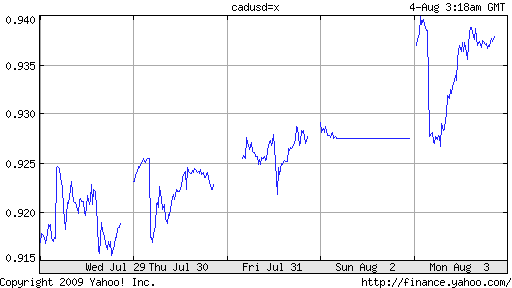
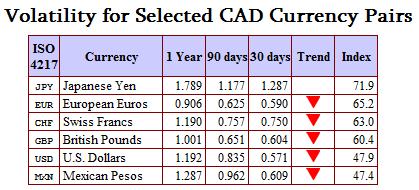

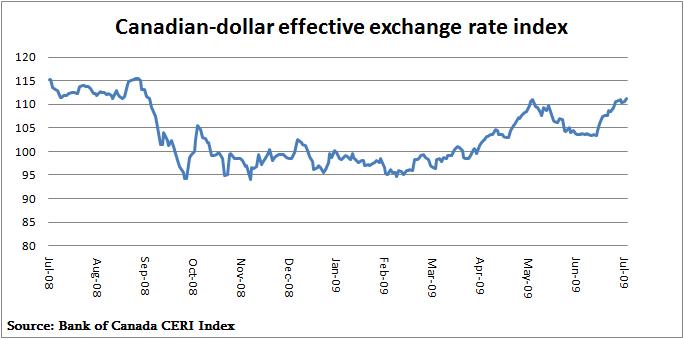
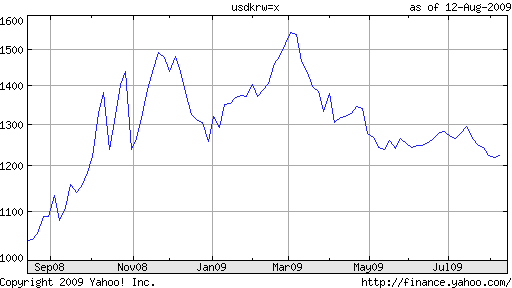
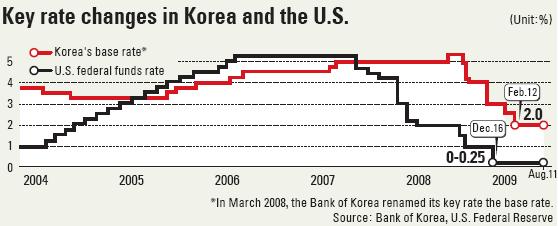

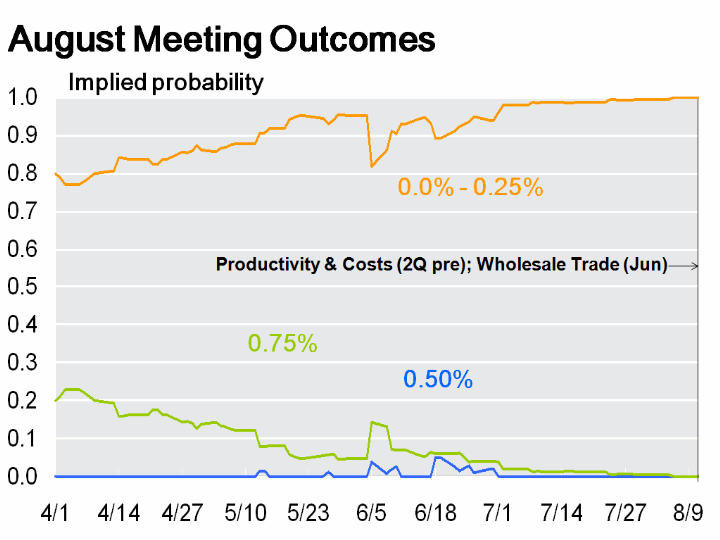
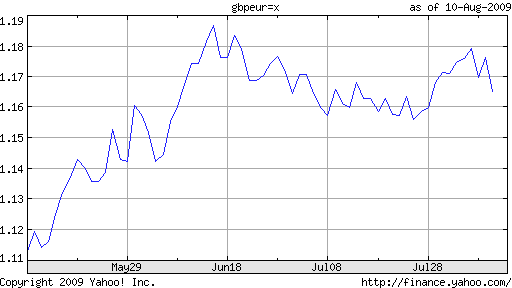
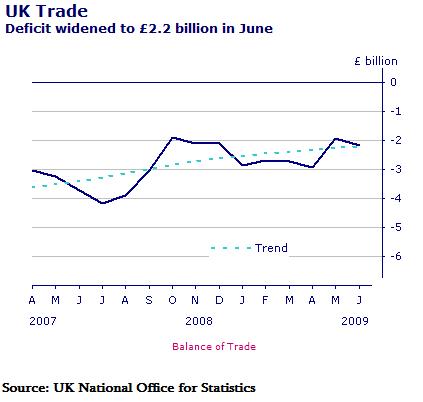
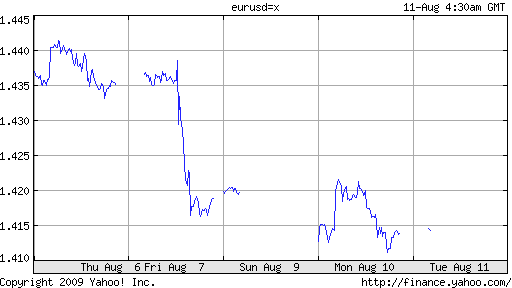
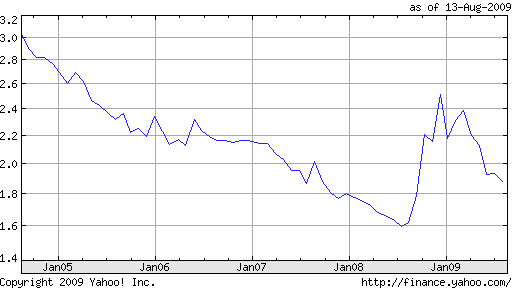
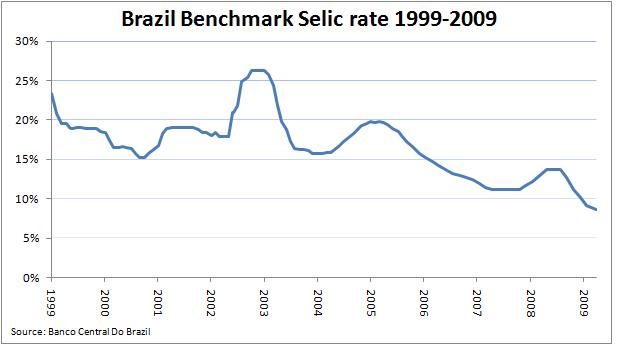

 Our two favorites - the site would cost:
Our two favorites - the site would cost:


 The AIG statistics are overwhelming. The company has 74 million customers around the globe. 30 million of those clients are American based. AIG operates in more than 130 countries. Prior to the current market conditions, the company backed more than $298 billion in assets globally.
The AIG statistics are overwhelming. The company has 74 million customers around the globe. 30 million of those clients are American based. AIG operates in more than 130 countries. Prior to the current market conditions, the company backed more than $298 billion in assets globally.
 departments. As one of a very small number of Americans who have read through the 140 page docket outlining the plan, I have analyzed and detailed it below. Overall, Departments like Agriculture show great detail while other departments like that of State use broad language and provide few clues into what programs will actually receive the billions. Unsurprisingly the National Intelligence Agency has no details about either total budget nor allocation.
departments. As one of a very small number of Americans who have read through the 140 page docket outlining the plan, I have analyzed and detailed it below. Overall, Departments like Agriculture show great detail while other departments like that of State use broad language and provide few clues into what programs will actually receive the billions. Unsurprisingly the National Intelligence Agency has no details about either total budget nor allocation.






















